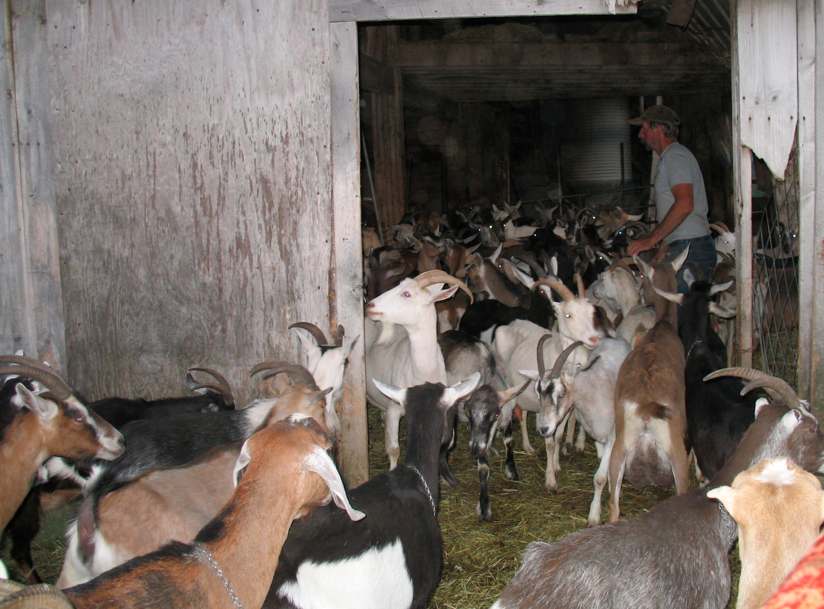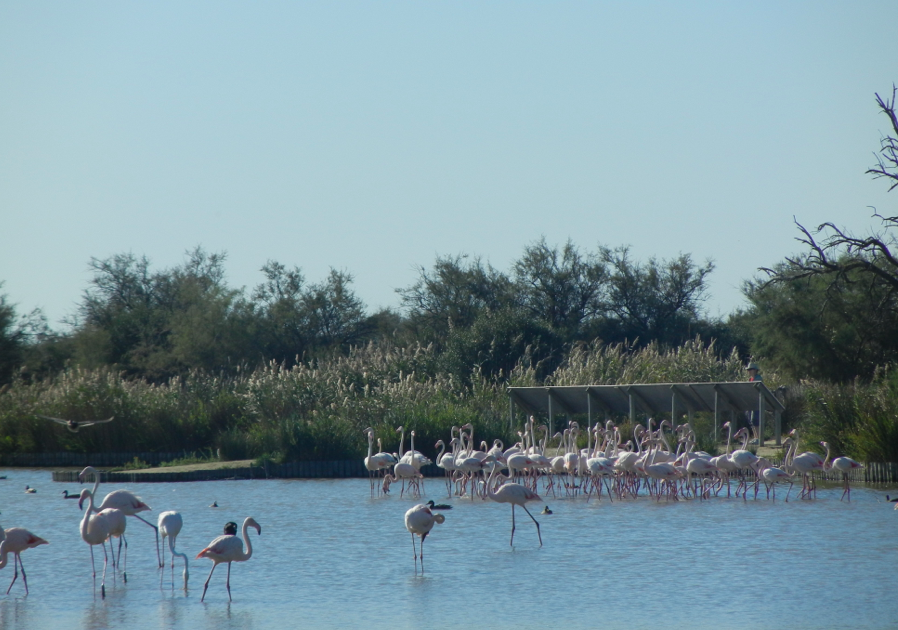| Online: | |
| Visits: | |
| Stories: |

| Story Views | |
| Now: | |
| Last Hour: | |
| Last 24 Hours: | |
| Total: | |
Survival of the safest: Darwinian conservatism, not daring-do
A mantra for many in life science is 'survival of the fittest'. This phrase, one Darwin liked and used many times after he saw its use by Herbert Spencer, reflects Darwin's view of life as a relentlessly competitive phenomenon. To Darwin, life was an unending struggle for survival (and reproduction) among individuals in every species all the time. Natural selection, a relentless force like Newtonian gravity, always identified the 'fittest', weeding out the others.
Darwin's objective was to show how new characters could arise, that were suited–'fitted'–to their environment, without the intervention of God via special creation events. Because organisms, all and always, were struggling against each other for limited resources, they 'tried' (via their inherited genomic drivers) to be better, different, more exploitive of environmental opportunities than their fellows. Dare to be different!
But in perhaps fundamental ways, Darwin had it very wrong, perhaps inverted from what is really going on. We know this from the analysis of genomes, the presumed source of all evolutionary evidence, since everything that's inherited goes back, at least indirectly and usually directly, to information carried in DNA.
When DNA sequences are compared within or between species, there are segments that are seen to have very little variation among the sequences, and segments with much more variation. Now we have learned how to identify truly functional parts like coding exons, transcription start sites, introns, promoter and some regulatory regions, functional RNAs (like tRNA, rRNA and so on), telomeres, and so on. And we have also identified many parts (the majority, actually) that has far less obvious or strong function, if indeed any function at all. So what do we see?
The clear, consistent pattern is that the more strongly functional, the more highly conserved (there are a few exceptions, like sensory system genes in the olfactory and immune system, but even their variation proves the rule). The less, or non-functional regions vary much more, both within and between species.
 |
| Herd of dairy goats, Polymeadows Farm; photo A Buchanan |
This has been seen so consistently, that for many purposes (like the ENCODE project to characterize all DNA elements) sequence conservation is the very definition of biological function. The reason is that evolution conserves function but doesn't care about bits that have no function. One can quibble about the details, but the main gist of the message seems unequivocally correct. But this now near-dogmatic principle has some little-digested implications.
Darwinian evolution
The problem Darwin wanted to solve was to explain the di
fferences among species, and the way they were suited to their ways of life, in terms of historical processes rather than Divine creation. He had a deep sense of geological change and biogeography from his trip on the Beagle, that showed the evidence of local relationships that suggested common ancestry. And then he had an idea of a law of Nature, an ineluctable force-like process of adaptive change, the way gravity is a force, that would gradually form the kinds of differences that characterized species.
'Natural selection' was the name he gave to that force. And because it was force, like the way gravity is a force, it could detect the tiniest differences among competing organisms and favor them to produce the next generation. He borrowed the phrase 'survival of the fittest' from his polymath contemporary, Herbert Spencer, to give the flavor (well, for him, flavour) of his idea.
The idea is that species always over-reproduce relative to their resources (an idea that was already 'in the air' in Britain at the time), and struggle to obtain what become limited resources. Because of inherited variation, the individuals with the best genotype (to use our term for it) reproduced, their poor lesser peers fell to what Tennyson would call 'Nature red in tooth and claw'.
Darwin's idea was that selection always favored the innovator. Relentless striving to be different from the herd, to get the scarce food or mate supply. As the late thinker Leigh Van Valen suggested, the Darwinian struggle was like the Red Queen in Alice and Wonderland–always running as fast as she could, but never getting ahead because the competition was always trying to out-do you with their own adaptations.
This is so entrenched in the biological and evolutionary literature, that it may be surprising to realize how different from what we see in the actual data–the genetic data, our most precise indicator–about how evolution works.
Or is this Darwinian?
What we actually see in the genetic data is not the kind of chaotic variation that an intense, force-like, relentless struggle to be better than your peers would lead us to expect. Instead, what we see is what can only be called herd behavior at the genome level. Our ancestors did, and our contemporaries do, their very best to stay with the herd. The high conservation of functional DNA sequence suggests that mutational variation is mainly harmful to fitness, that what selection really favors is conformism. Don't be very different, or you'll get pruned away from your species' posterity!
 |
| Herd of flamingoes, the Camargue, France; A Buchanan |
Instead of 'survival of the fittest', what is by far mainly going on is 'survival of the safest'. Stay with the mean. Why is that? A standard answer that is likely accurate, is that we today are the product of a long past in which the traits we bear were able to survive. We're very complex organisms, so what evolution hath joined, let no one put asunder except at their peril!
Survival of the safest might suggest that there is no innovation, which is clearly not correct, since different species have different adaptations–fish swim, cats eat meat, bats fly, we write blog posts. So clearly differences do arise and have been favored regularly in the past. However, that seems inconsistent with the high level of genomic conservatism that is so predictably identified.
One way, perhaps the major way, that these apparent contradictions are reconciled is this: As Darwin stressed repeatedly, evolutionary change is very, creepingly slow. That means that either there are occasional short bursts of rapid, major change, brought about by largely catastrophic changes in circumstances, or, only a very minor 'ooze' of the distribution of traits occurs in some favored direction from one generation to the next. This is imperceptibly slow at any given time, because being near the mean is still the safest place to be. Just be a tiny bit different.
Survival of the safest is Darwinian in that it is a form of natural selection. Indeed, it is a lot more Darwinian than Darwin was himself. Selection is more probabilistic and less force-like than he thought (he lived still in Newton's shadow), but it is always at work as he said it was. It's just that it's mainly at work removing rather than favoring what is different. Every geneticist knows this, but it is far from thoroughly integrated into the common view of evolution even by professionals.
If a trait were being strongly driven by selection in some new direction all the time, as in the more exclusive connotation of survival of the fittest, we might expect only a few variants with strong effect in the favored direction would be contributing to its newly adaptive instances. Mapping the variation in the trait would perhaps yield a rather simple genetic causal picture as a result.
But if a trait is being roughly maintained, by survival of the safest, pruning away serious deviants, then any genotypes that are consistent with being somewhere near the average can stay around, with individual variants coming and going by chance (genetic drift). Variants conferring trait values too far from the mean are pruned by selection. But most variants can hang around. Mapping would reveal very large numbers of contributing variants across the genome. And there would not be precise predictability from genotype to phenotype.
This is what we see in biology.
Survival of the safest in daily life, too
'Survival of the safest' thus seems to be a better metaphor for adaptive biological evolution. But if you think about it you'll see that we see much of the same regularly in most aspects of our society. We may say heady things like 'dare to be different!', but those who dare to be very different are quickly punished by being ignored or directly slapped down. This is true through history. It's the general fact in religion, government, social behavior. And it's true in science, too. Business as usual is safe, real innovation is a threat to the established. We see the press of society to claim to be different, but not really to be different. Innovation mostly means incremental change trumpeted with exaggerated verbiage. We may even think we want major, rapid change, but emotionally we shy from it, and feel too nervous about what it might mean for our own current state.
Organizations and sociocultural and political systems are very slow to change. or they change in herd-like fashion. This is true even in realms, like the business world, where one often hears a rather self-satisfied pronouncement that allowing free-market Darwinian competition is the way to get innovation. Innovation is often claimed, but much less often really major. It's true in science, too: everyone is playing grantsmanship, to seem different to draw attention or funds, in this case, but you dare to be very different at your peril, lest reviewers suspect, distrust, can't grasp, or are jealous of your idea. Some rapid change may occur, but it's not so common relative to the inertia of survival of the safest.
That is what we see in society.
Source: http://ecodevoevo.blogspot.com/2015/02/survival-of-safest-darwinian.html



